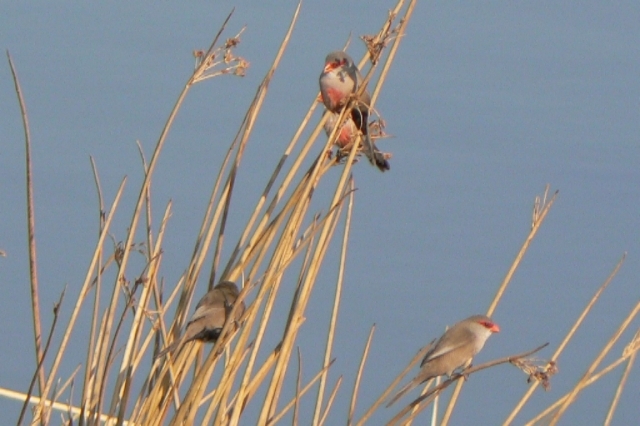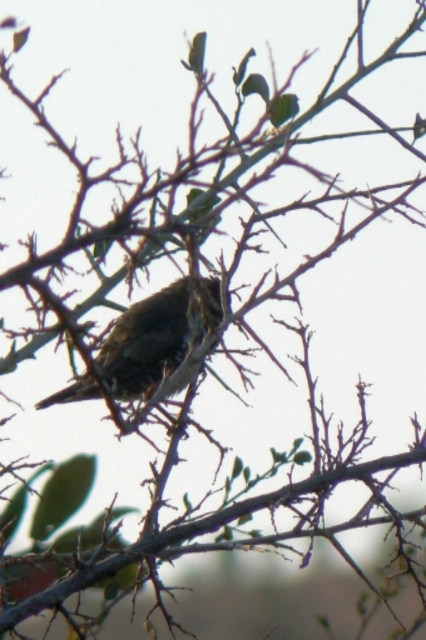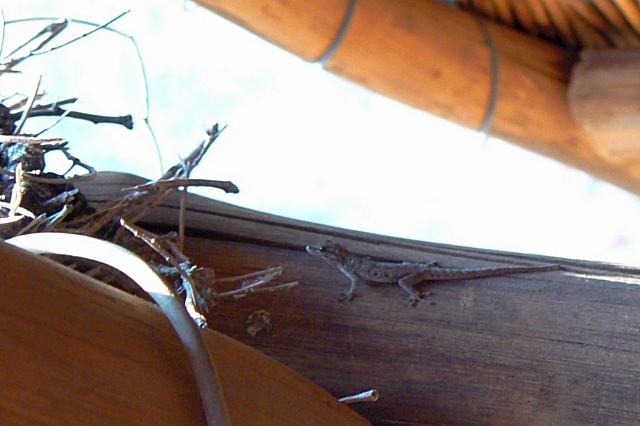This might be a rather rare sighting, but the Black-backed ones are more pretty and more fun to watch - however first sighting in a long time for me
 Side-striped Jackal Canis adustus
Side-striped Jackal Canis adustus

Kruger National Park, 24 August 2014
The Side-striped jackal is easily distinguishable from its other jackal relatives. It is slightly more drab in color, and has shorter legs and ears. These jackals tend to be light gray to tan and are distinguishable by a white tip on their relatively dark tails. They tend to have a white stripe from elbow to hip and black side stripes which are not always conspicuous. This jackal species tends to be heavily built and is sexuallly dimorphic in size, males are somewhat larger than females. Males range from 7.3 to 12 kg, whereas females are seldom known to weigh more than 10 kg.
The Side-striped jackal is found in West, Central and Southern Africa, except for the most southern part of the continent, and has a wider distribution than its Black-backed cousin. It is found in many different habitats, from game reserve areas, to towns and cultivated farms, in woodland savannah, marshlands and bushveld. It tends to avoid very open savannah, dense forest or very arid areas.
Side-striped jackals are monogamous. Mating occurs every year just before or during the rainy season. In Southern Africa the Side-striped jackals breed from June to November. Litters range in size from 3 to 6 offspring; however, evidence suggests that there may be some resorption of fetuses in the womb or other sorts of early reduction in the litter size, ultimately resulting in a litter of only 3 to 6. The average gestation period lasts between 57 and 70 days. The female will give birth to 3 – 6 blind pups in a breeding chamber inside their den. The dens are either self-dug, or are abandoned aardvark burrows or termite mounds. The pups, whose eyes open after 10 days, may be moved to a new site every few weeks particularly if the female perceives danger. Lactation occurs for 8 to 10 weeks. Both the female and male, sometimes assisted by the occasional young jackal from the previous year’s litter will take part in caring for the pups, returning to the den and regurgitating food for the newborns for a period of two months. At the vulnerable age of just 3 months old the pups will join their parents scavenging or foraging for food.
Sexual maturity is reached around 6 to 8 months and dispersal follows at 11 months of age.
Side-striped jackals are strictly nocturnal, having peak activity times in the evening well before dawn. These animals tend to live singly or in pairs, but have been known to form packs having as many as 6 members. These jackals tend to forage on their own or in pairs. Areas with larger food supplies often encourage larger groupings.
Mated pairs of jackals are territorial and are known to mark and defend the boundaries of their territory.
Side-striped jackals are more completely omnivorous scavengers than any other type of jackal. Their diet varies from area to area, however, they are generally known to feed mainly on insects, fruits, small vertebrates, carrion, and plant material. They catch various insects, mice, and birds by making a quick dash or pouncing action, but have never been recorded to run anything down. Rather, they tend to feed on the leftovers of other faster predators.






 ]
]




